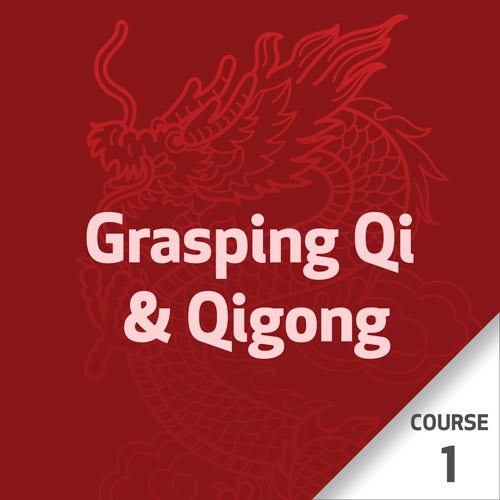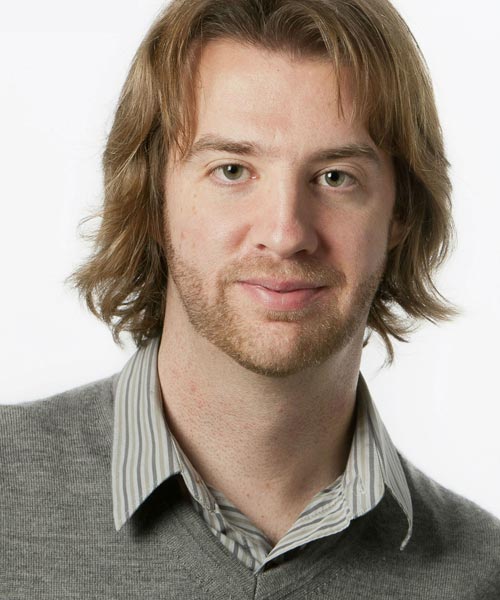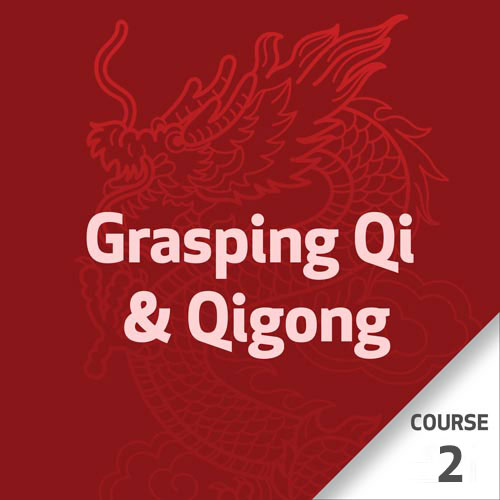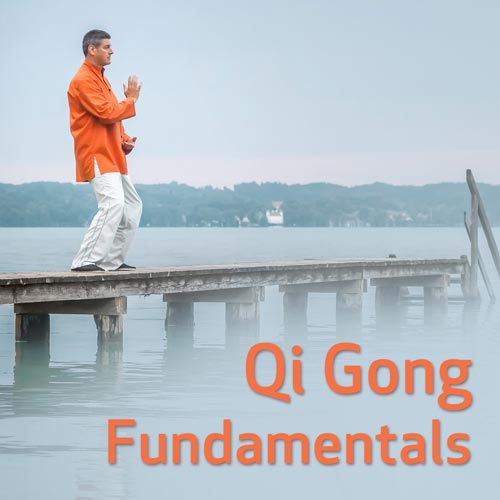The Importance of Qigong for Acupuncturists and T.C.M. Practitioners
If you practice Acupuncture you should include Qigong in your daily routine. The classic texts of Chinese medicine often speak of the importance of the mind, intention, and spirit for the success of acupuncture treatment. For example, in the Ling Shu (靈樞) it states, “the spirit should focus on the needle, and the intention should focus on the disease.” Or in Su Wen (素問), it states, “A repeated failure to produce a curative outcome with a patient is due to the acupuncturist’s inability to concentrate their spirit.” Establishing a consistent Qigong practice can help focus our spirit and direct it toward improving both our health, as well as the health of our patients.
What is Qigong (氣功)?
Qi (氣) refers to the energy within our bodies, and Gong (功) means work or experience. Qigong means working with our internal energy. It is a practice consisting of breathing exercises, static body postures, and dynamic movements, as well as mental concentration methods intended to maintain good health and control our internal flow of Qi-energy.
Practicing Qigong can help us build a powerful resistance against externally contracted illnesses; it can also be used to treat internal ailments caused by reduced blood and Qi-energy circulation within our internal organs. Qigong also involves specific breathing techniques that have been proven to increase energy production at a cellular level. This additional energy can be used to enhance our well-being, or it can be used to improve the health of our patients through more effective acupuncture treatments.
Self-Care: The Tao of Nurturing Life
Many forms of Qigong have existed throughout history. One method that can be used to treat imbalances in our internal organ systems is the practice of Healing Sounds Qigong. Healing Sounds Qigong teaches us to use specific sound waves to subtly vibrate our five internal Zang organs (the lung, kidneys, liver, heart, and spleen), as well as the San Jiao Triple Energizers. In so doing, our internal organs can be mildly stimulated and rejuvenated. This stimulation encourages our internal organs to detoxify and makes room for fresh Qi-energy and Blood to nourish them. This form of Qigong is an excellent form of self-care for people seeking to live long and healthy lives. After all flowing water never grows stale.
Improving our Acupuncture Results
Yi Quan (意拳) Qigong is also excellent for encouraging Qi-energy to flow throughout our body. This method of Qigong can also teach us to bring Qi-energy to our hands. Yi Quan Qigong (pronounced ee-chuan) is a form of Qigong that was founded in the 1920s by master Wang Xiang Zhai (王薌齋), who developed it by distilling the methods of another system called Xing Yi Quan (形意拳). "Yi" (意) means intent and "Quan" (拳) means fist. This center of this method of Qigong is a straightforward series of standing meditations. The goal of Yi Quan Qigong is to build Qi-energy in the body and promote a strong connection or root with the energy of the earth. The strong root that we develop through Yi Quan Qigong is what allows us to control our spirits and focus our minds. The focused intent developed from the practice of Yi Quan Qigong is what is meant by this passage from the classic Acupuncture text Su Wen(素問), “when an acupuncturist is needling, their form should be as if they are standing beside an abyss, the hand holding the needle as if grasping a tiger, and the spirit should not be disturbed by anything else”.
The Best of Both Worlds
As acupuncturists, we are always working with energy. Since most of our patients have fallen ill due to a combination of counteractive energies and stagnations, there is a good chance that some of this negativity will be passed on to us. This potential consequence is the reason why all T.C.M. practitioners and Acupuncturists should practice a self-care method like Healing Sounds Qigong. Healing Sounds Qigong will keep our energies flowing so that we never grow stale. Further, the classic texts of ancient China all uphold that most of the skill involved in Acupuncture is related to controlling our spirit and applying our intention to our needling. With regular Yi Quan Qigong practice, we can project our intent more clearly during an acupuncture session.
Conclusion
In closing, the clear mind encouraged by Yi Quan Qigong and the nourished organs brought about by self-care methods like Healing Sounds Qigong will have benefits that extend well beyond our clinics. After all, cultivating our practices also cultivates our lives.
Su Wen and Ling Shu translations sourced & adapted from Ioannis Solos: Developing Internal Energy for Effective Acupuncture Practice.
Other Courses By This Teacher






Grasping Qi & Qigong Series - Course 1
Ancient Qigong Tradition Meets Modern Science
with David Lloyd
See In StoreOverview
Have you ever wanted to understand the foundations of traditional Chinese medicine using modern scientific research? Have you ever decided to start a Qigong practice, but didn't know where to begin? Do you want to experience an authentic Qigong lineage, backed by modern science?
If so, this is the course for you.
In this course's theory section, you learn modern science behind how our bodies create and circulate energy. You learn how our three Dan Tian generate and store energy. You learn the contemporary anatomy that validated the presence of the acupuncture channel system. You learn how modern research explains the ancient concept of Jing (Essence), Qi (Energy), and Shen (Spirit). You also learn the fascinating science behind the Qigong mindstate of Ru Jing, and how modern science has proven the link behind how our minds connect to the environment.
In this course's practical section, you learn about the fundamentals of proper Qigong posture, the three methods of proper Qigong breathing, and several basic exercises that help you create more Qi. Along with generating more Qi, you also learn how to move Qi and increase your Qi's power.
Don't delay; get started today!
Dr. David Lloyd, R.Ac, R.TCMP, D.Ac has been studying Qigong for 30 years and instructing for 20 years. His mission has always been to bridge classical Chinese medical theory with western science.
Learning Objectives
- Understand the Western science behind Qi.
- Understand the Western science behind how energy circulates within the body.
- Understand how our minds connect to the resonance of the planet while practicing Qigong.
- Understand the fundamentals of proper Qigong breathing.
- Understand the fundamentals of proper Qigong posture.
Your Teacher

David Lloyd
David Lloyd, R.Ac, R.TCMP, D.Ac, is a seasoned educator with 22+ years of experience integrating Traditional Chinese Medicine with modern science. Known for his engaging courses on acupuncture, T.C.M., and Qigong, he bridges ancient wisdom with cutting-edge biochemistry & electrical physics.
Categories
Tags
Grasping Qi & Qigong Series - Course 2
Red Dragon Qigong - 紅龍氣功 - 400-Year-Old Authentic Longevity Practice
with David Lloyd
See In StoreOverview
Ming Dynasty China (1368 - 1644), which had been weakened by corruption and internal rebellion, was overtaken by the Manchu in 1644. In 1647 the Manchu attacked the southern Buddhist Shaolin Temple in Quanzhou, Fujian province. Only five masters managed to escape, and since then became known as the Five Elders. These masters were named: Zhì Shàn Chán Shī (至善禪師), Wǔ Méi Dà Shī (五梅大師), Bái Méi Dào Rén (白眉道人), Féng Dào Dé (馮道德), and Miáo Xiǎn (苗顯).
After escaping, Zhì Shàn Chán Shī founded another temple at Nine Lotus Mountain (九蓮山) in Fujian province. Here the other survivors sought shelter. During their time in seclusion, the five elders refined their knowledge of health/medicine, meditation, and martial wisdom. Unfortunately, this temple was also attacked by the Manchu and destroyed.
After his escape, Féng Dào Dé left to study medicine and spirituality in Sichuan's remote mountain area, next to Tibet. It is from this history that the practice of Red Dragon Qigong (Hóng Lóng Qì Gōng - 紅龍氣功) originates.
The Red Dragon Qi Gong practice is the foundation of Féng Dào Dé's Internal Energy System. The name "Red Dragon" signifies the internal heat or Yang Qi (陽氣) developed through this standing meditation set. This practice stretches and opens up the energy channels within our bodies.
This course also contains an explanation of the modern clinical research illustrating Qigong's benefits.
Learning Objectives
- Learn the modern and ancient history of Qigong.
- Learn the standing Red Dragon qigong meditation set to promote Qi movement throughout the body.
- Learn the modern science behind how the human energy system and Qigong works, along with peer-reviewed examples of health benefits.
- Learn the internal body mechanics that make Qigong work effectively.
- Learn the seated Red Dragon qigong meditation set for energy cultivation.
Your Teacher

David Lloyd
David Lloyd, R.Ac, R.TCMP, D.Ac, is a seasoned educator with 22+ years of experience integrating Traditional Chinese Medicine with modern science. Known for his engaging courses on acupuncture, T.C.M., and Qigong, he bridges ancient wisdom with cutting-edge biochemistry & electrical physics.
Category
Tags
Overview
Qi Gong Fundamentals
As a practitioner, it is crucial that you understand the energy that flows within your body, as this, in turn, helps you perform more effective and enriching treatments. In Qigong Fundamentals, learn all of the steps required to tap into the energy that flows within your body, including topics on how our bodies create and move energy throughout the meridians.
Understand how to use your breath to create more energy, and detoxify your organs using six distinct healing sounds. Finally, protocols on how to mobilize and store your energy using Yi Quan standing meditation, and also, the equation of Qigong using modern physics are explored.
All of these concepts are vital for anyone practicing acupuncture or any other hands-on healing art. What would you do with more energy? Looking to tap into your potential? Learn more about these vital strategies in this comprehensive course with Dr. David Lloyd, R.Ac., R.TCMP.
Learning Objectives
- To understand how Qi is created within the body using modern science.
- To be able to mobilize your Qi using Yi Quan standing meditation.
- To understand the method and practice of Qigong.
- To understand how Qi moves around the body using physics and gravity.
- To be able to practice the six healing sounds for organ detoxification
Your Teacher

David Lloyd
David Lloyd, R.Ac, R.TCMP, D.Ac, is a seasoned educator with 22+ years of experience integrating Traditional Chinese Medicine with modern science. Known for his engaging courses on acupuncture, T.C.M., and Qigong, he bridges ancient wisdom with cutting-edge biochemistry & electrical physics.
